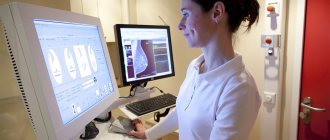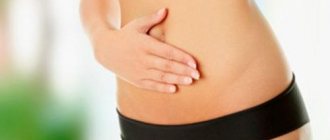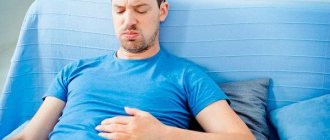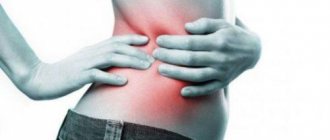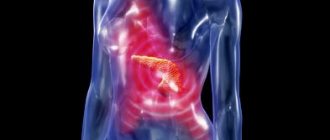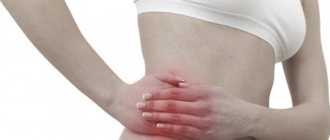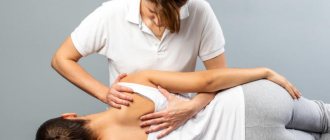The anterior part of the left hypochondrium is rich in internal parts of the body, so discomfort in this area is usually caused by damage to one of them.
It is undesirable to leave pain under the left rib unattended, since they are often the first sign of the development of a pathological condition. So, very often pain and heaviness in this area are the result of ailments of the nervous, respiratory and digestive systems.
In today’s material we will cover in more detail why it hurts under the left rib in the front, how dangerous it is and whether it can be treated. Interesting? Then be sure to read the article below to the end. We assure you that every reader will find a lot of useful information.
Main reasons
Stitching pain on the left side that appears during active physical activity indicates a poor warm-up. If a person does not suffer from cardiomyopathy, then such increased blood circulation is not dangerous for him. In addition, pain occurs:
- Dagger-like, very sharp and cutting. Often associated with perforation of the intestines or stomach, rupture of the spleen, renal pelvis.
- Acute and severe post-traumatic. Pain when trying to breathe after a fall or accident indicates varying degrees of damage to internal organs.
- Blunt. If the pain occurs periodically and is spreading, then in most cases a chronic gastrointestinal pathology is diagnosed. These are mainly gastritis, cholecystitis and pancreatitis.
- Aching. Prolonged sensations indicate slow-moving duodenitis or colitis. If symptoms are accompanied by nausea and vomiting, a stomach ulcer may be suspected. Pain in coronary artery disease, angina pectoris, and pre-infarction also radiates to the left side.
What hurts in the left side and what does it mean?
1. Physiological pain in the left side
. Perhaps the most “harmless” signal from the body. Physiological pain can occur as a result of running. The spleen fills with blood and puts pressure on its own membrane, which causes pain. That is why it is necessary to warm up thoroughly before running and maintain even breathing during activity. There is no need to be afraid of such pain, just stop and catch your breath, and when the pain subsides, return to training, slowing down the pace a little.
2. Intestines
. There can be many reasons for pain in the left intestine: intestinal infection, colic, neoplasm growth, irritable bowel syndrome. If the pain is one-time in nature and goes away on its own after a couple of days, there is no need to worry. If the pain continues for more than two days, becomes constant and interferes with normal life, you need to consult a doctor and undergo an examination.
3. Pancreas
. Is the aching pain in your left side constant and worsens after eating? This may be a symptom of chronic pancreatitis, that is, inflammation of the pancreas that occurs due to repeated damage to the organ. If such pain occurs for the first time, but persists for several days, you need to conduct an examination to detect acute pancreatitis.
4. Stomach
. Most of the stomach is located on the left side of the abdominal cavity, so pain associated with this organ most often occurs on the left side. Acute pain in the upper abdomen may indicate gastritis or peptic ulcer. It can occur in both adults and children. Therefore, if a child complains of pain in the left side, he needs to be seen by a doctor immediately.
5. Kidneys
. In diseases associated with the excretory system, pain is often felt in the lumbar region. Severe pain that spreads down the ureter and to the perineum can be caused by renal colic, which occurs when a stone enters the ureter. If the pain is dull, aching, radiating to the lower abdomen, this may be a symptom of pyelonephritis.
Remember that only a specialist can make an accurate diagnosis based on your complaints and the results of additional examinations and tests. Do not panic if pain appears once; anyone can experience it. However, if the pain is accompanied by additional symptoms, then you should pay closer attention to it.
Diagnostics at MedSeven
Since organs and soft tissues are located in the abdominal region, an X-ray examination here is not very informative. Only with the help of MRI, specialists obtain clear and contrasting images in 3 planes. In addition, magnetic resonance imaging is performed without ionizing radiation. At the MedSeven MRI diagnostic clinic, using high-precision expert-class devices, doctors study the condition and functioning of:
- pancreas;
- spleen;
- lymph nodes;
- vessels;
- soft tissues of the abdominal walls.
Unlike X-rays, MRI has a minimum of contraindications. These include an inadequate mental state, too much weight and the inability to remain in a stationary position.
Treatment
Help before diagnosis
To reduce discomfort, patients are advised to follow a diet. Fatty and spicy foods, smoked foods, and spices are excluded from the diet. The best ways to prepare food are steaming, stewing, baking in the oven. Alcohol consumption is prohibited. Self-administration of medications is unacceptable, since heaviness in the hypochondrium has hundreds of causes that must be diagnosed and treated by a specialist.
Conservative therapy
If there is heaviness in the hypochondrium, etiotropic and pathogenetic medications are selected for the underlying disease that caused the symptom. Treatment is carried out on an outpatient basis, but during the period of exacerbation of chronic pathology, it is recommended to undergo a course of inpatient therapy. As a rule, the following groups of drugs are used:
- Choleretic agents
. Improving the outflow of bile during its stagnation quickly eliminates heaviness and discomfort in the right side and eliminates dyspeptic disorders. Medicines of the group of choleretics and cholekinetics, medicinal mineral waters are used. - Antibiotics
. Indicated for exacerbation of inflammatory processes in the hepatobiliary zone in order to prevent purulent complications. For infectious cysts, specific antiparasitic drugs are needed. - Antiviral drugs
. Prescribed to patients with chronic viral hepatitis to reduce the number of copies of the pathogen in the blood and prevent complications. For effective treatment, long courses are selected (at least 3 months). - Hepatoprotectors
. They protect the liver from damage by toxins and free radicals, improve the functional activity of the organ and promote cell regeneration. Usually they complement the main treatment of the pathology that caused heaviness under the right ribs. - Anti-inflammatory drugs
. Nonsteroidal anti-inflammatory drugs are used to eliminate discomfort and pain in the hypochondrium. Glucocorticoids quickly relieve autoimmune conditions that lead to the development of hepatomegaly or splenomegaly.
To eliminate signs of inflammation and reduce subjective symptoms, physiotherapy is performed. In chronic cholecystitis, UHF, inductothermy, and the administration of drugs to the affected area by electrophoresis show a good effect. To reduce the manifestations of gastric dyskinesia, diadynamic therapy, low-frequency pulsed currents, and SMT therapy are effective.
Surgery
In the calculous form of cholecystitis, a planned laparoscopic cholecystectomy is performed to prevent an attack of biliary colic. Impaired outflow through the hepatic or splenic veins is an indication for the application of artificial anastomoses to restore blood flow. For echinococcal cysts, surgical excision of the space-occupying lesion or endoscopic drainage is prescribed. In case of tumor processes, the volume of intervention is determined taking into account the degree of their benignity and spread.
Accurate diagnosis of the causes of pain
Effective therapy is possible only after an informative diagnosis. Allows you to prescribe the correct treatment MRI examination. Method:
- harmless, since only safe magnetic waves affect the patient’s body;
- takes a little time (15-30 minutes);
- gives 95% accurate results.
Based on the tomography findings, the doctor offers the most effective treatment options. You can undergo the examination in our clinic at a time convenient for the patient.
Pathologies of the diaphragm
This is the main respiratory muscle, which conditionally separates the chest and abdominal cavity. As a rule, the cause of pain on the left under the ribs in front when inhaling is a diaphragmatic hernia, during the development of which the lower part of the stomach moves upward due to an increase in the lumen of the esophagus.
This pathological condition can occur against the background of:
- regular high-intensity physical activity;
- pregnancy;
- chronic constipation;
- excess body weight;
- pathologies of the gastrointestinal tract;
- respiratory diseases.
Diaphragmatic hernia is a serious illness, the danger of which is that over time the functioning of the digestive system, heart and lungs is increasingly disrupted.
Main symptoms of the disease:
- Aching pain on the left under the ribs when inhaling air. It is permanent.
- Frequent episodes of regurgitation (almost after every meal).
- Heartburn.
- Belching air.
- Difficulty swallowing food.
- Bloating.
- Cough.
- Tachycardia.
Treatment of pathology involves the use of surgical methods, during which the surgeon returns the stomach to its place and sutures the lumen of the esophagus. Conservative therapy in this case is ineffective. Medications only temporarily reduce the severity of symptoms.
Help from professionals
At the MedSeven MRI diagnostic clinic, patients are welcome around the clock. Professionals provide an attentive approach, accurate diagnosis and effective prescriptions. In MedSeven:
- a powerful PhilipsIntera 1.5 Tesla tomograph is used;
- You can sign up online through the website;
- the MRI report is issued in 15-20 minutes;
- There is a 50% discount on consultations on further treatment.
Patients are seen by the best MRI specialists in Moscow. Leading surgeons in the USA, Israel, Germany and Russia trust the images taken at MedSeven.
Get an MRI of the abdominal cavity in Moscow >>>
The service includes:
- Study
- Disk with image
- Film is paid separately
- Transcription by a radiologist doctor
Which doctor should I contact for pain in my left side?
If you experience pain in your left side, you should contact a competent specialist. The first thing you should do is make an appointment with a gastroenterologist, since abdominal pain is the specialty of this specialist. After the examination, the doctor may redirect you to another specialist - a cardiologist, neurologist, surgeon or nephrologist, if it turns out that you do not have a gastrointestinal disease.
Doctors from a variety of specializations are seen at medical clinics in Moscow. In the center’s laboratory, you can donate blood and have an ultrasound scan as prescribed by a doctor, so as not to waste time in queues and find out the results of the examination as quickly as possible. We maintain affordable prices for specialist appointments and procedures necessary for examining the body.
Make an appointment by calling +7 (495) 021-98-73 or leave a request on the website, and our administrators will make an appointment for you.
Do not ignore pain, seek help in a timely manner to prevent possible complications.
Acute pyelonephritis
If your left side hurts under the ribs when you inhale, this may indicate kidney pathology. The term “acute pyelonephritis” refers to an inflammatory process in which the pyelocaliceal system and intermediate tissue of the organ are involved.
The main reason for the development of the disease is the spread of infection to the kidneys from the lower urinary tract. This occurs in the presence of one or more provoking factors.
These include:
- intestinal dysbiosis;
- vaginal dysbiosis, an increase in its acidity;
- hormonal imbalance;
- frequent change of sexual partners (for women);
- increased intrarenal pressure;
- ureteral strictures;
- prostate adenoma or cancer;
- stones in the ducts through which urine is excreted from the body;
- hypothermia;
- diabetes;
- pregnancy;
- overwork;
- viral infections;
- hypovitaminosis.
If the left side of the organ is affected, the disease can be suspected if the following signs are present:
- The urge to urinate becomes more frequent. In this case, urine is not released.
- When inhaling, the left side hurts under the ribs, the unpleasant sensations radiate to the abdominal cavity.
- General health worsens.
- Body temperature rises.
- A feverish state appears.
- Sweating increases.
Gradually, the pain with a deep breath on the left (under the ribs) reaches its maximum peak. Its severity decreases somewhat as you exhale. Coughing, sneezing, any physical activity - all this increases the intensity of painful sensations so much that a person may lose consciousness.
The key to successful treatment is timely provision of medical care. The prognosis is considered favorable if the disease subsides while taking medications. According to statistics, in 30% of patients the disease becomes chronic. At the same time, the risk of developing pathologies that pose a threat to the patient’s life remains.
Heart pathologies
In the human body, the diaphragm is closely connected with the central circulatory organ. That is why, in the presence of cardiac pathologies, the process of inhaling air can be accompanied by pronounced painful sensations.
As a rule, patients in this case are diagnosed with one of the forms of cardiomyopathy. The most dangerous is considered to be dilation, in which the heart becomes flabby and cannot fully perform its function. The causes of this pathology are unknown.
In addition to pain when breathing on the left under the ribs, patients complain of shortness of breath after performing any physical activity, dizziness, a constant feeling of weakness, swelling of the lower extremities, sleep disturbances, and frequent episodes of fainting.
For cardiomyopathy, symptomatic treatment is carried out. The prognosis for the presence of the disease is usually unfavorable. Until recently, the only option for patients was a donor organ transplant. But the difficulty is that the queue of patients is extremely impressive. However, finding a donor heart is almost impossible. Currently, the stem cell treatment method is used in practice.
Diseases of the respiratory system
Pain on the left side under the ribs in front when inhaling may indicate the development of pleurisy or pneumonia. In the first case, the pathological process affects the lungs, in the second - the serous membrane that surrounds them.
Pneumonia is an acute infectious disease. The clinical picture and severity of symptoms directly depend on the cause, gender and age of the patient.
General symptoms of pathology:
- Increased body temperature. The rise comes sharply.
- General signs of intoxication of the body (weakness, rapid onset of fatigue, headache).
- Dry cough. Appears in 3-5 days. Gradually it turns into a wet form, accompanied by sputum.
- Painful sensations in the chest area, aggravated by inhalation. They can radiate to the area of the left or right hypochondrium, and the pathological process can also be bilateral.
- Dyspnea.
Pleurisy is a disease that, as a rule, is not independent in nature, but accompanies a number of other pathologies of the respiratory system. The disease can have both a dry and exudative form.
The clinical picture of the disease directly depends on the underlying cause. Common symptoms include: pain in the left or right hypochondrium, worsening with inhalation; reflex painful cough; increased body temperature; chills; weakness.
Treatment of pathology consists of eliminating the underlying disease and reducing the severity of symptoms.
Folk recipes
If there is pain when coughing under the ribs, and the doctor did not prescribe any medications during diagnostic procedures, then you can alleviate the symptoms with folk remedies.
Honey is considered the best cough syrup. Moreover, this beekeeping product can help in the presence of a cold. The simplest recipe: mix a small amount of honey with lemon juice and add the resulting mixture to warm milk. You just shouldn’t give this product to a child under 3 years old, and of course you shouldn’t use honey if you are allergic to it.
You can mix honey with pepper, which actively stimulates blood circulation, thereby improving the outflow of mucus. For two tablespoons you will need 1 teaspoon of pepper, pour the mixture with boiled hot water and leave for 10 minutes. Afterwards, the product is filtered and drunk.
Tea with thyme and thyme is considered an excellent remedy. By the way, thyme in Germany is even approved and recommended for use in official medicine. These herbs relax the trachea and reduce inflammation. The tea is very easy to prepare; you can take the raw materials of both plants in equal parts and steam with boiling water, leave for about 7 minutes and drink as an ordinary warm drink.
Black radish juice is considered a good remedy. It is suitable for use for dry and wet cough. Radish contains a large amount of essential oils, so even one spoon of juice, maximum 4 times a day, relieves bronchospasm well.
Warming and rubbing
For rubbing, you can use a mixture of goose (duck) fat and grated onion. The proportion in this case is 1:2. The ingredients mix well and apply to the back and chest area.
You can make compresses from potato juice. The potatoes are grated on a fine grater, the resulting juice is mixed with pepper and applied to the ribs and chest area. However, the compress cannot be applied directly to bare heat; a thin cloth is first applied to the skin.
If the compress is made from black radish juice, then you can soak gauze in the juice and apply it to your back.
Classical drug therapy
Traditional treatment is mainly aimed at improving peripheral circulatory function. As a rule, they are prescribed:
- analgesics;
- drugs with a slight diuretic effect;
- muscle relaxants;
- chondroprotectors.
Treatment is often supplemented with a course of vitamins and minerals to improve the body's protective functions.
Along with taking medications, you should review your diet and include as much fruits, vegetables, dairy products and protein foods as possible. You will have to temporarily give up carbonated drinks, fried foods and other “junk” foods.
Pathologies of the pancreas
Pancreatitis is most often diagnosed in patients. Against the background of its development, the functioning of the pancreas is disrupted. The disease can be both acute and chronic. In the first case, a person is bothered by pain in the left hypochondrium, which intensifies when inhaling; his appetite is impaired; vomiting appears; body temperature rises; diarrhea or, conversely, constipation develops. In the chronic form, patients complain of constantly feeling unwell, nausea, and flatulence.
Treatment of pancreatitis may include both conservative and surgical methods.
Pain under the ribs on the left: what does the intensity indicate?
The intensity of pain under the ribs on the left, front and back indicates the development of inflammation.
Depending on the cause and origin, pain can manifest itself in different ways. Its character indicates the organ in which the problem appeared, as well as the true cause of the pathology. Therefore, it is important to listen to your body. What is the intensity of pain on the left, front and back and what does it indicate:
Spicy:
- The discomfort is intense and occurs suddenly.
- Usually a person expects that it will “resolve” on its own.
- But if possible, you should seek medical help as soon as possible.
- Such pain can be caused by pancreatitis and renal colic.
- If there was an injury, then organs may be injured by fragments of their own bones.
Remember: If acute pain occurs, hospitalization is required. Time can be counted in minutes. Call an ambulance immediately.
Chronic:
- This is a mild, not very intense pain that bothers you periodically.
- You can get rid of it with the help of painkillers.
- But you still shouldn’t ignore it. It will not be possible to do without treatment.
- Contacting a doctor will allow you to determine the diagnosis in time, begin therapeutic manipulations, and stop the development of pathology. Otherwise complications may arise.
Discomfort may occur after a hearty breakfast, lunch or dinner:
- Pain in the left side of the abdomen that appears after eating may be a manifestation of gastritis.
- Added to this symptom are a burning sensation in the esophagus, heartburn, belching, a sour taste in the mouth and even diarrhea.
- The degree of manifestation of such unpleasant symptoms can be determined by the acidity of the stomach and the level of mucosal disorders.
- These are serious violations that entail further development of pathologies or complications.
No matter what kind of discomfort you have, consulting a doctor is necessary in any case. The sooner you consult with a specialist, the sooner adequate treatment will begin.
